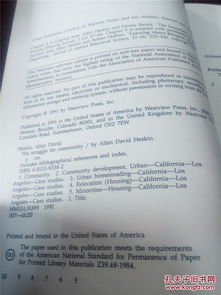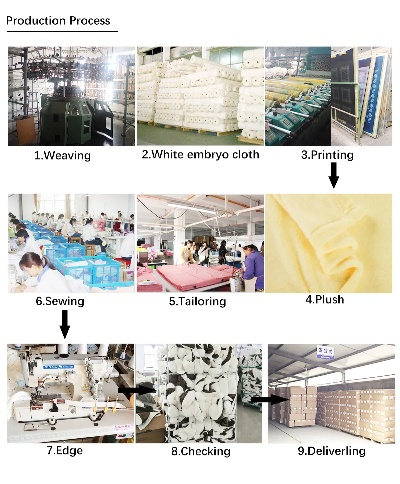The Struggle for Environmental Justice in Textile Dyeing
: The Struggle for Environmental Justice in Textile Dyeing,In recent years, environmental issues have become increasingly prominent in the textile dyeing industry. Textile dyeing, an essential industrial process, is responsible for the creation of a wide range of colors and textures that adorn our clothing and furnishings. However, this process also poses significant environmental challenges due to its high energy consumption and water pollution. As a result, there has been a growing demand for environmentally conscious practices in textile dyeing. This paper examines some of the ways in which environmental justice is being sought within the textile dyeing industry, focusing on the efforts towards reducing waste and pollution and promoting sustainable practices. It explores various strategies employed by businesses to reduce their environmental impact while still maintaining profitability, such as the use of eco-friendly dyes and solvents, implementing advanced wastewater treatment systems, and adopting renewable energy sources. The study argues that while achieving environmental sustainability is a complex and challenging endeavor, it remains crucial if we are to safeguard our planet for future generations.
Introduction: Textile dyeing is an essential step in the manufacturing process of textile products, which not only adds color to fabrics but also imparts durability and texture. However, this process often involves the use of harmful chemicals that have been banned or restricted due to their negative environmental impact. In this essay, we will explore the challenges faced by manufacturers and consumers as they navigate the complex landscape of prohibited dyes and explore innovative solutions to mitigate their impact.
Prohibition of Textile Dyes: Textile dyes are a significant contributor to water pollution and air pollution, particularly during their production and disposal stages. Some commonly used dyes such as benzidine, para-phenylenediamine (PPD), and diazo compounds have been banned or restricted in many countries due to their toxicity and carcinogenic properties. For example, the European Union has implemented a comprehensive list of prohibited substances for textile dyes, including arsenic trioxide, mercury, and lead salts.
Manufacturers' Challenges: The challenge for textile manufacturers is finding alternative dyes that meet the same color intensity while being environmentally sustainable. Many traditional dyes are derived from natural resources like wood, plant fibers, or minerals, which are finite and contribute to deforestation and soil erosion. Manufacturers must therefore invest in research and development to develop eco-friendly alternatives that are both effective and cost-efficient. Additionally, complying with new regulations and standards can be time-consuming and expensive, requiring continuous monitoring and auditing.

Consumer Perceptions: Consuming textiles made from prohibited dyes can have serious consequences for human health and the environment. The use of these dyes can lead to allergies and respiratory problems, and some studies suggest that exposure to certain dyes may cause cancer. As a result, consumers have become more aware of the environmental risks associated with their clothing choices, leading to a shift towards eco-friendly and sustainable fashion. This trend has driven manufacturers to adopt more sustainable practices and promote their eco-conscious products.
Innovative Solutions: To address the challenges faced by manufacturers and consumers, there has been a growing interest in developing innovative solutions. One approach is the use of bio-based dyes that are derived from renewable sources like plants and bacteria. These dyes are less toxic and have lower environmental impact compared to traditional dyes, making them a promising option for manufacturers looking to minimize their carbon footprint.
Another solution is the adoption of circular economy principles in textile production. This involves designing clothes with longer lifespans, reducing waste through efficient recycling processes, and using materials that can be reused multiple times. By embracing circularity, manufacturers can reduce their ecological footprint and create a more sustainable supply chain.
Case Study: One example of a company that has successfully implemented sustainable dyeing practices is Patagonia. The brand produces clothing made from organic cotton that uses natural dyes derived from plants like turmeric, madder root, and indigo. Patagonia's commitment to sustainable practices has earned them recognition as a leader in the sustainable fashion industry, demonstrating that it is possible to balance environmental responsibility with economic growth.
Conclusion: The ban on certain textile dyes highlights the importance of responsible consumption and production. As manufacturers and consumers alike grapple with the challenge of transitioning to more sustainable practices, it is crucial that we continue to push forward with innovative solutions that prioritize the well-being of our planet. By working together, we can create a brighter future where textiles are not just functional but also environmentally conscious.
随着纺织品的广泛应用,染料的使用也日益受到关注,随着环保意识的提高和消费者对健康安全的日益关注,禁用纺织品染料的使用逐渐成为行业关注的焦点,本文将探讨禁用纺织品染料的市场趋势、监管现状以及相关案例分析。
禁用纺织品染料市场趋势
市场需求变化
随着环保意识的提高,消费者对环保、健康安全的纺织品需求日益增长,禁用纺织品染料的需求也随之增长,政府对环保和安全的监管力度也在不断加强,推动了禁用纺织品染料市场的快速发展。
行业发展趋势
禁用纺织品染料的应用范围不断扩大,从传统的染料领域扩展到更多领域,如家居纺织品、运动纺织品等,随着科技的不断进步,新型环保染料的研发和应用也得到了快速发展。
禁用纺织品染料监管现状
禁用纺织品染料的使用受到了一定的监管限制,政府出台了一系列相关法规和政策,对禁用纺织品染料的生产和销售进行了严格的监管,行业协会也在积极推动行业自律,加强行业内部的自律管理。
在监管过程中也存在一些问题,一些企业为了追求利润最大化,可能会违规使用禁用纺织品染料;一些监管部门在执行监管时可能存在疏漏等,需要进一步加强监管力度,提高监管效率。

禁用纺织品染料案例分析
某品牌纺织品染料被禁用事件
某品牌在生产过程中使用了某些被认为对人体有害的禁用纺织品染料,由于该事件引起了消费者的广泛关注和媒体的报道,政府和相关监管部门对该品牌进行了调查和处理,该品牌被要求停止使用禁用染料,并接受了相应的处罚。
新型环保染料的研发和应用案例
近年来,新型环保染料的研发和应用得到了快速发展,某公司研发了一种新型环保染料,该染料具有低毒性、低残留等特点,符合环保和健康安全的要求,该公司在市场上得到了广泛的认可和应用。
禁用纺织品染料解决方案与建议
针对禁用纺织品染料的使用问题,我们提出以下解决方案和建议:
加强行业自律管理
加强行业自律管理是解决禁用纺织品染料问题的关键,行业协会应该积极推动行业内部的自律管理,加强企业之间的交流和合作,提高企业的自律意识,政府应该加强对企业的监管力度,提高监管效率。
加强法规和政策监管
加强法规和政策监管是解决禁用纺织品染料问题的必要手段,政府应该出台更加严格的法规和政策,加强对禁用纺织品染料的生产和销售进行严格的监管,行业协会也应该积极推动相关法规的制定和完善。
推动技术创新和应用创新
推动技术创新和应用创新是解决禁用纺织品染料问题的有效途径,企业应该积极研发新型环保染料,提高染料的环保性和安全性,政府和企业也应该加强合作,推动染料的广泛应用和普及。
禁用纺织品染料的使用问题已经成为行业关注的焦点,随着环保意识的提高和消费者对健康安全的日益关注,禁用纺织品染料的使用问题将会得到更好的解决,加强行业自律管理、加强法规和政策监管以及推动技术创新和应用创新是解决禁用纺织品染料问题的关键措施。
Articles related to the knowledge points of this article:
Exploring the Rich Traditions of Rui Tao Textiles in Shaoxing
The Fabric of Innovation:An Extensive Analysis of Changshu Junce Textiles
A Comprehensive Guide to Purchasing Inventory Textiles in Zhejiang
Blue Dream Textiles:A Journey Through Quality and Innovation
The Global Textile Expo:An Exploration of the Timetable and Key Events



